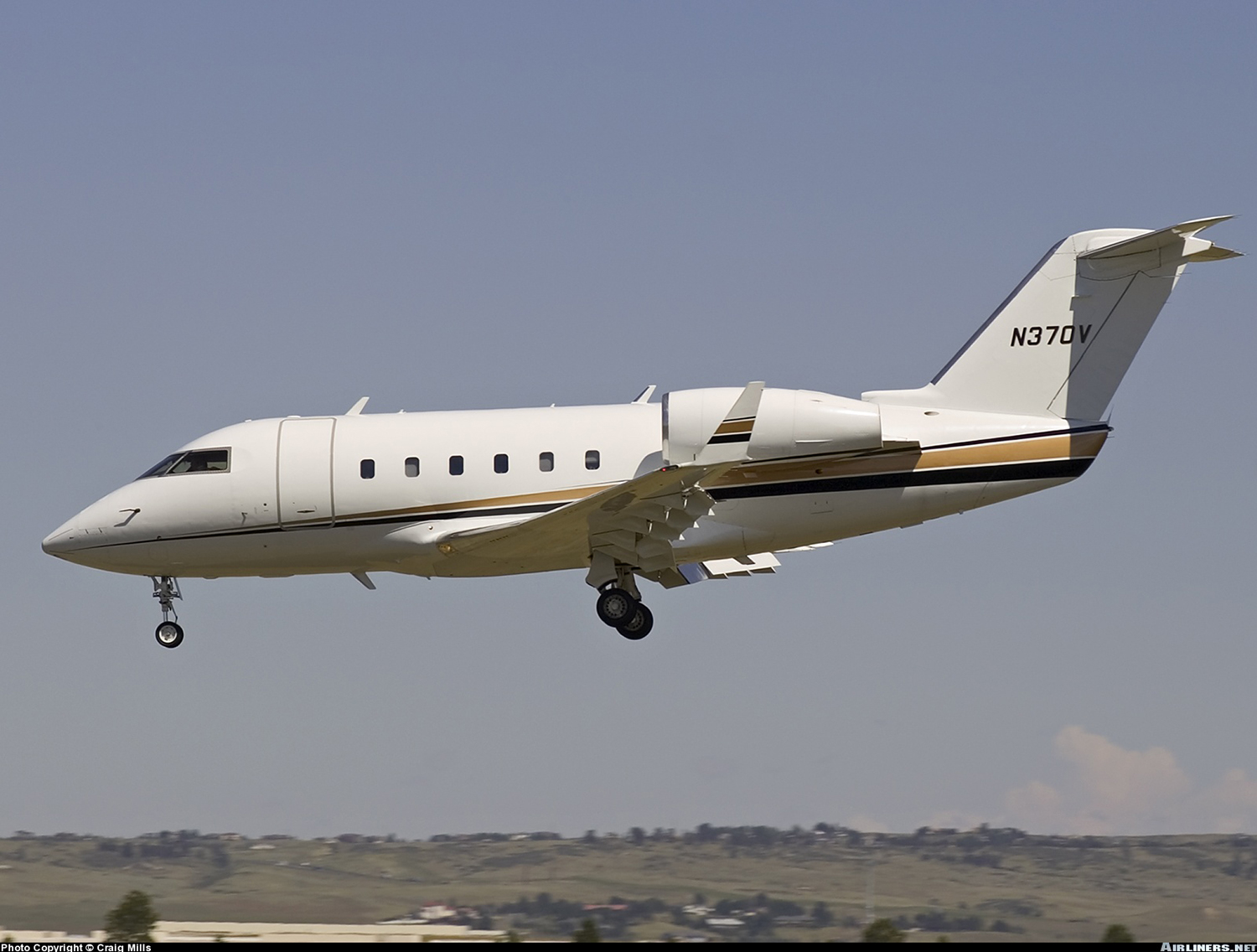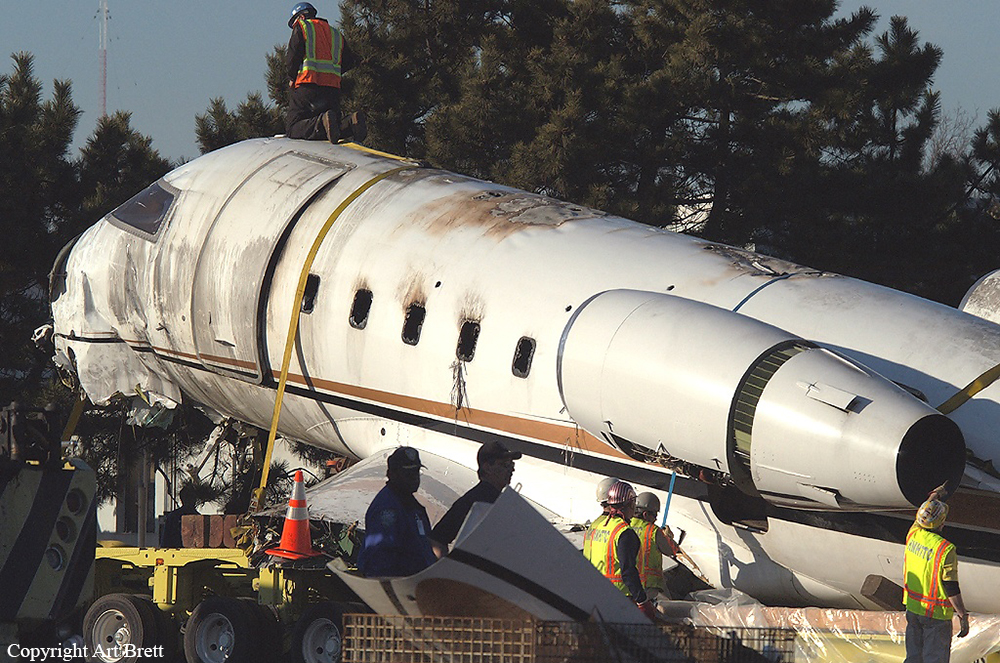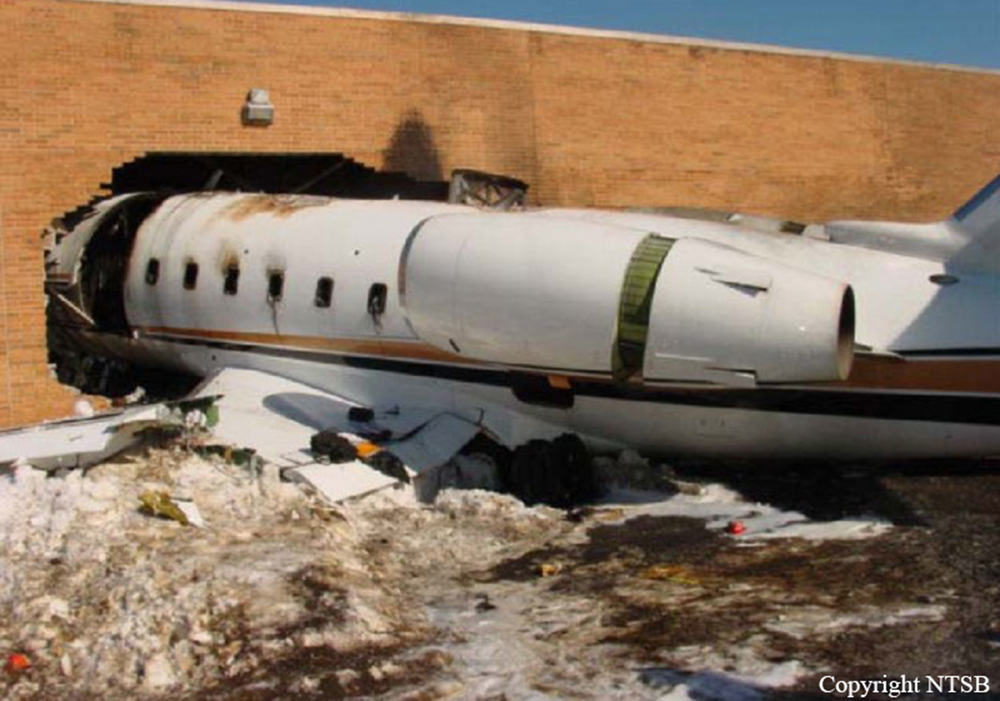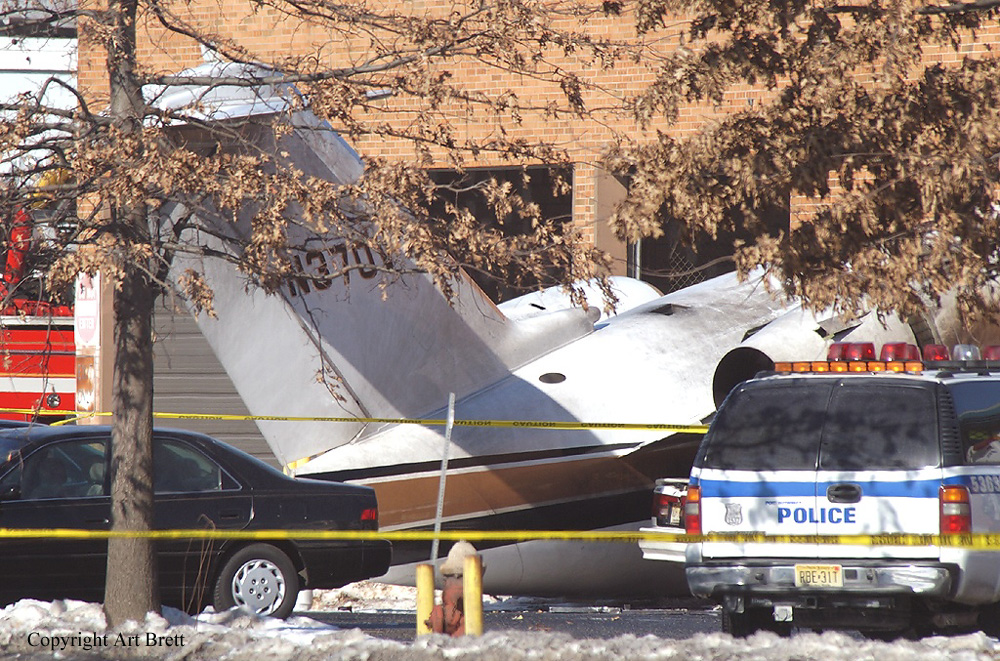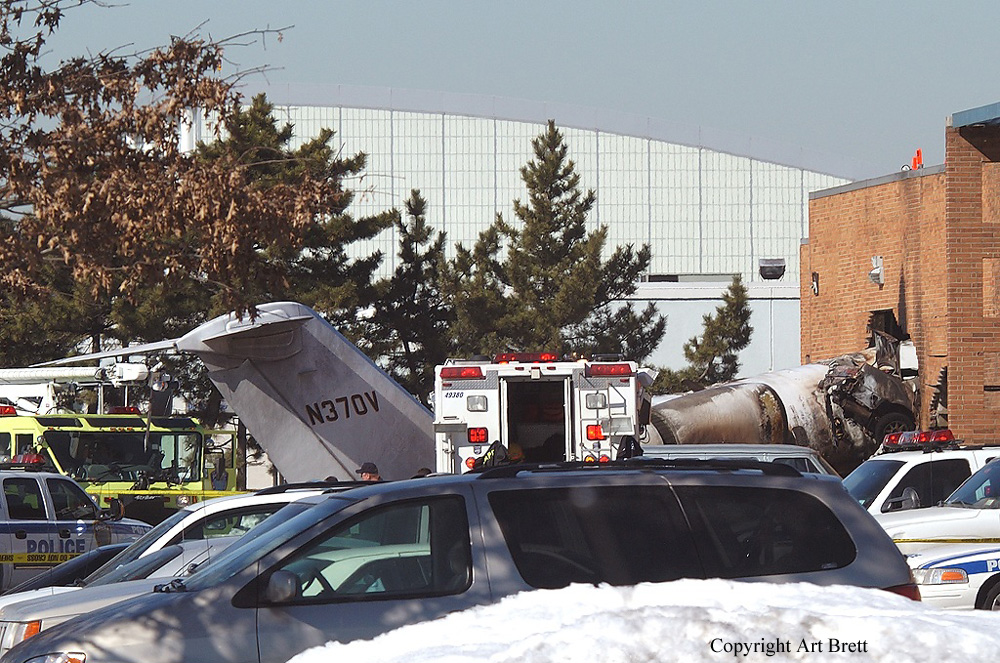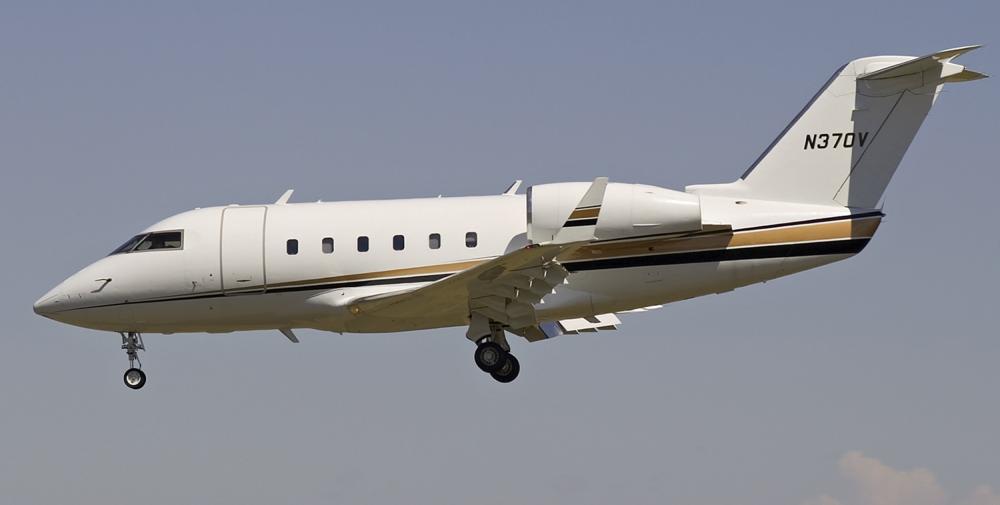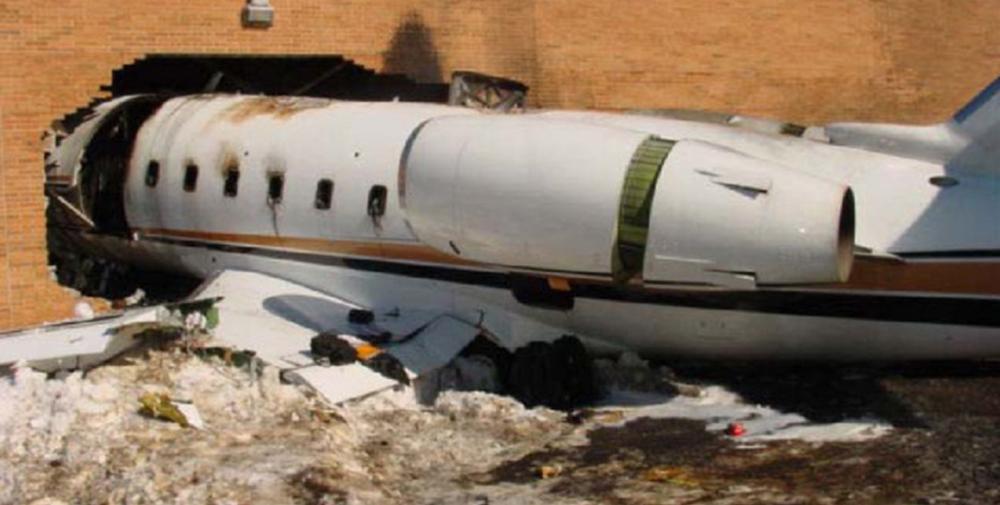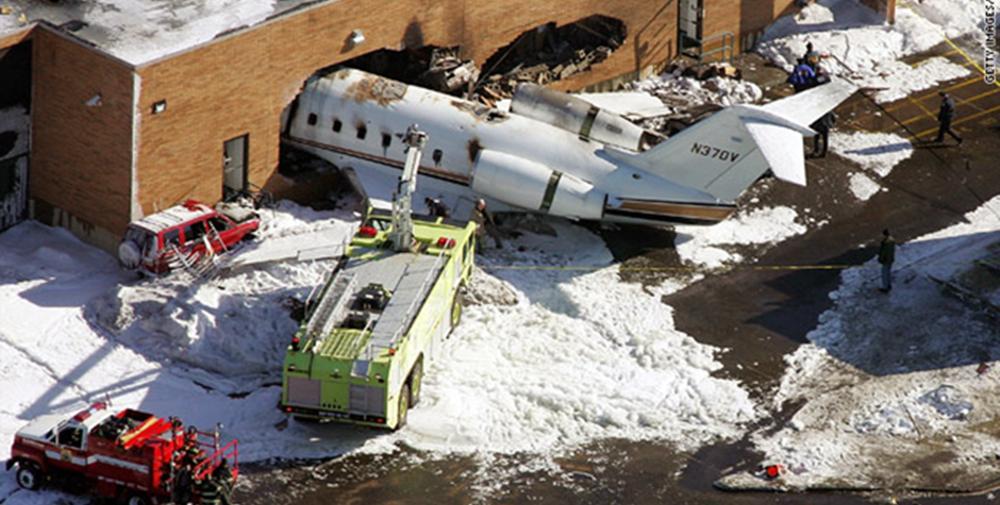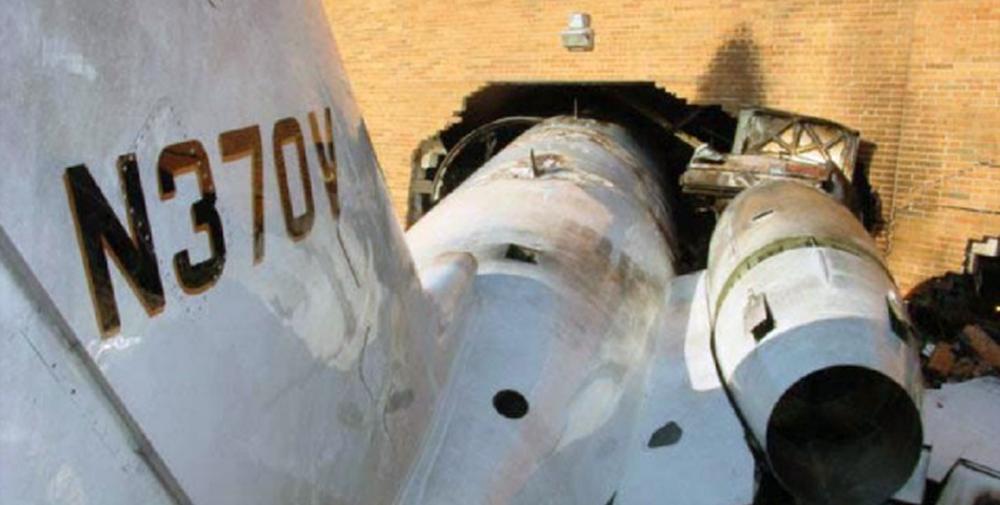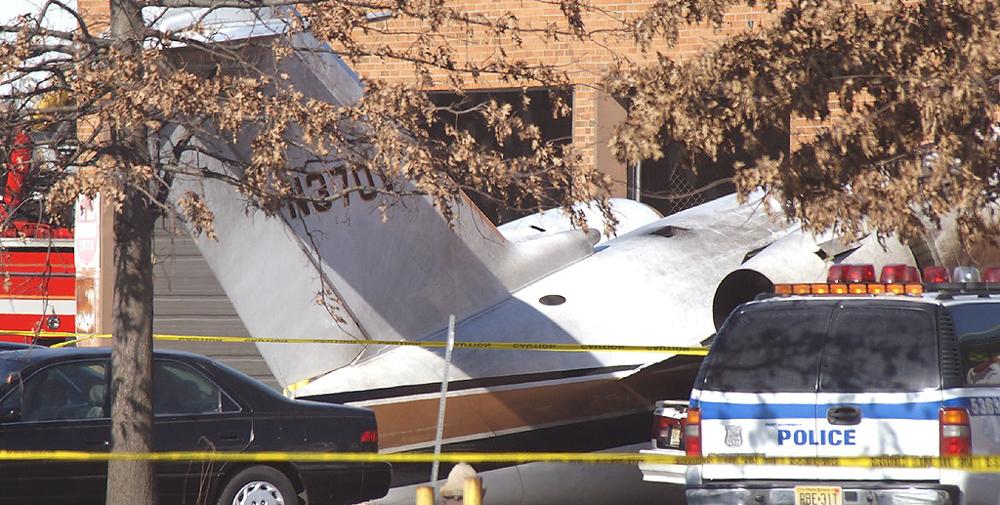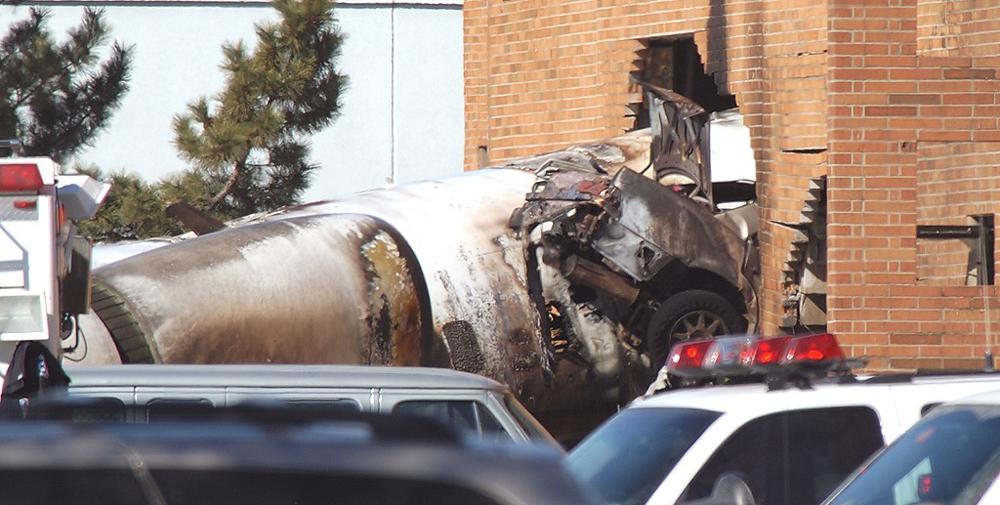Date & Time:
Feb 2, 2005 at 0718 LT
Type of aircraft:
Canadair CL-600 Challenger
Registration:
N370V
Flight Phase:
Takeoff (climb)
Flight Type:
Charter/Taxi (Non Scheduled Revenue Flight)
Survivors:
Yes
Schedule:
Teterboro - Chicago
MSN:
1014
YOM:
1980
Country:
United States of America
Region:
North America
Crew on board:
3
Crew fatalities:
0
Pax on board:
8
Pax fatalities:
0
Other fatalities:
0
Total fatalities:
0
Captain / Total hours on type:
3378
Copilot / Total hours on type:
82
Aircraft flight hours:
6901
Aircraft flight cycles:
4314
Circumstances:
On February 2, 2005, about 0718 eastern standard time, a Bombardier Challenger CL-600-1A11, N370V, ran off the departure end of runway 6 at Teterboro Airport (TEB), Teterboro, New Jersey, at a ground speed of about 110 knots; through an airport perimeter fence; across a six-lane highway (where it struck a vehicle); and into a parking lot before impacting a building. The two pilots were seriously injured, as were two occupants in the vehicle. The cabin aide, eight passengers, and one person in the building received minor injuries. The airplane was destroyed by impact forces and postimpact fire. The accident flight was an on-demand passenger charter flight from TEB to Chicago Midway Airport, Chicago, Illinois. The flight was subject to the provisions of 14 Code of Federal Regulations (CFR) Part 135 and operated by Platinum Jet Management, LLC (PJM), Fort Lauderdale, Florida, under the auspices of a charter management agreement with Darby Aviation (Darby), Muscle Shoals, Alabama. Visual meteorological conditions prevailed for the flight, which operated on an instrument flight rules flight plan.
Probable cause:
The pilots' failure to ensure the airplane was loaded within weight and balance limits and their attempt to takeoff with the center of gravity well forward of the forward takeoff limit, which prevented the airplane from rotating at the intended rotation speed.
Contributing to the accident were:
1) PJM's conduct of charter flights (using PJM pilots and airplanes) without proper Federal Aviation Administration (FAA) certification and its failure to ensure that all for-hire flights were conducted in accordance with 14 CFR Part 135 requirements;
2) Darby Aviation's failure to maintain operational control over 14 CFR Part 135 flights being conducted under its certificate by PJM, which resulted in an environment conducive to the development of systemic patterns of flight crew performance deficiencies like those observed in this accident;
3) the failure of the Birmingham, Alabama, FAA Flight Standards District Office to provide adequate surveillance and oversight of operations conducted under Darby's Part 135 certificate; and
4) the FAA's tacit approval of arrangements such as that between Darby and PJM.
Contributing to the accident were:
1) PJM's conduct of charter flights (using PJM pilots and airplanes) without proper Federal Aviation Administration (FAA) certification and its failure to ensure that all for-hire flights were conducted in accordance with 14 CFR Part 135 requirements;
2) Darby Aviation's failure to maintain operational control over 14 CFR Part 135 flights being conducted under its certificate by PJM, which resulted in an environment conducive to the development of systemic patterns of flight crew performance deficiencies like those observed in this accident;
3) the failure of the Birmingham, Alabama, FAA Flight Standards District Office to provide adequate surveillance and oversight of operations conducted under Darby's Part 135 certificate; and
4) the FAA's tacit approval of arrangements such as that between Darby and PJM.
Final Report:
N370V.pdf2.06 MB
